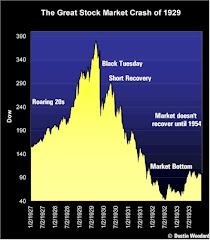Today in Ontario the Sunshine List of employees earning over $ 100,000 was released. It always makes a big splash. Ontario's Sunshine list - the salaries I question: Blizzard
Super Sized Splash
The Canadian Taxpayers Federation did a quick tally on the numbers from the Sunshine List.
Ontario public sector $100,000 club grows by 19%
One of the tidbits they found was that there were 164 on the list who earned over $400,000. A quick analysis shows that if all are fully qualified for their pensions the value of these 164 pensions will be over $700 Million. One of my favorites is U of Calgary president eligible for $4.5M pension
Super Sized Pensions
Public sector pensions are estimated at 70% of salary. This means a $400,000 salary will gain a $280,000 annual pension.
The cash value of the pension is 16 times the annual income amount. So a $280,000 pension has a value of $4.4 MILLION. This refers to the amount of money you or I would need in a bank account in order to fund a pension of this magnitude. It assumes the pension starts at age 55 and pays until age 82, the Canadian life expectancy.
Most public sector employees are eligible for pension at age 55. If they retire at this age and live to the average life expectancy of 82, this is 27 years. A pension of $280,000 over 27 years adds up to $ 7.5 Million. The lower amount of $4.4 Million assumes that earning on the pension will make up the extra. Hence, 164 pensions valued at $4.4 Million each is about $721 Million.
The lump sum is also know as fair-value of the pension or present value of a member's earned pension. In simple terms, it is the amount of money that would have to be invested today to pay for the member's future pension.
Super Sized Taxpayer Contributions
Pension limits in Canada are around $82,000. In order to get these higher pensions a special pension rule was created for the public sector. Called a SERP, it allows for an unlimited amount of funding. We looked at this in an earlier blog.
Statscan shows that these plans have accumulated $199 BILLION to pay the pensions of these Super-Sized pensions. Note these are called Government Consolidated Revenue Arrangements in this illustration.
Taxpayers have contributed more into these plans ($199 Billion) than we have accumulated into the CPP plan. ($122 Billion). Note also that of the $1.2 Trillion in pension funds, $805 Billion of this has been funded by taxpayers on behalf of public sector employees.
Not only do these guys get the big bank roll today, the ice cream on the pie is the pensions to come. In fact most of these guys will earn far more in their retirement years than they ever earned working. Remember they did not earn $400,000 for their entire careers.
All this is funded by taxpayers earning an average wage of $40,000 per year.
As Kevin Gaudet says:
“There is an increasing divide between those who work in the private sector and those privileged and protected workers in the public sector. This has to end,”




What privilege?
ReplyDeleteAnyone can apply: http://www.gojobs.gov.on.ca/
Your post over-generalizes the situation. If someone is capable to retire at 55 with unreduced pension, it means that they put in at least 30 years of service. Such record entitles them to a 60% pension, based on average 5-year earnings. Few public sector employees can boast 5-year earnings that are over $100,000.
ReplyDeleteGovernment employees deserve their pension as they pay into it, unlike some of the private sector pensions like at GM. They put on average 10% of their earnings towards their pension plan throughout their working life which is matched usually 1:1 by their employer. Private companies have matching plans too, but employees, particularly young, do not take advantage of these programs. Their money is gone and they spend the rest of their lives begrudging that others planned their futures better.
Here is my advice: look at the "sunshine list". Find a position which you think is obviously overpaid and you could do with your eyes closed. Get that job and stop complaining!
I agree entirely with the last 2 comments. There is lots of envy when there is a downturn and none when we come back up. Ah well
ReplyDeleteI don't believe the comment of taxpayers having paid $199 Billion of the $199 Billion into pension funds. Makes no sense with that the public employees paying 50% of the premium into their pension fund. The gov't (taxpayers) pays the other 50% -- this means $99.5 Billion each.
ReplyDeleteGovernment employees are taxpayers too, so in a way they pay a portion of the "Government" portion of their pension as well.
ReplyDeleteThe public employee pensions may be generous, but they are very inflexible and unreduced pensions are only available late in your life and after many years of service. If someone decides to leave the government job before reaching the pre-defined retirement age and take their pension with them, they can only take "their" half and even this is potentially locked-in for many years. If they die early, and have no surviving spouse, they may never get much of their pension money at all. In contrast RRSP is yours 100%. You can take it out tomorrow if you like.
I look at public sector pension as an incentive for long-term employees. This is rare in the private sector, so since there is no direct comparison there, you should not compare pensions either.
This article/blog is very misleading. It fails to account for the fact that these pensions are reduced by the amount of the CPP.
ReplyDeletePensions are part of the pay package. Thus the total pay package can be excessive but the pension cannot be.
ReplyDeleteStop pitting private sector versus public sector pensioners. Both lose to the benefit of their previous employer, a company in the private sector, and the taxpayer in the public sector. Yes, the government and thus the taxpayer gets part of the retiree’s pension when a public employee retirees.
ReplyDeleteThe mechanism to transfer part of a pension to the employer is the innocent sounding five-year averaging of salaries. That means 5 different dollars are involved. A 2006 dollar is different than a 2007 dollar, etc. So averaging is arithmetic nonsense. The salaries have to be converted to dollars of one year before averaging, A simple procedure.
ReplyDeleteWithout that, “averaging” those retiring this year will receive pensions reduced in cost and purchasing power by about 6%. 1982 retirees started with pensions reduced by 26%.
ReplyDeleteSo pensioners in both sectors lose. Employers in both sectors gain. Thus taxpayers gain.